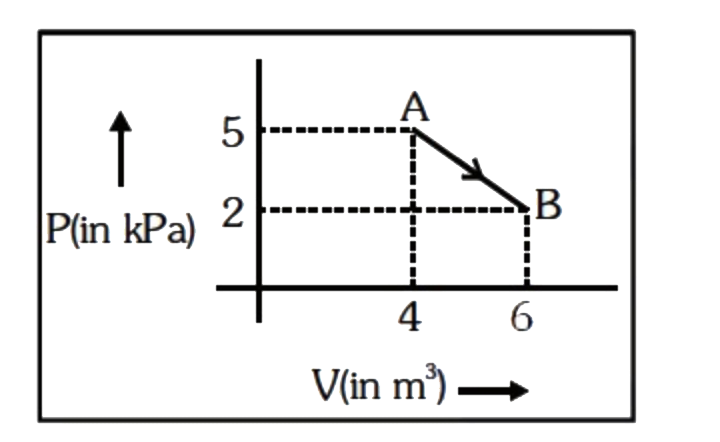One mole of an ideal gas undergoes change of state from (4 L, 3 atm) to (6 L, 5 atm). If the change in internal energy is 45 L-atm then the change of enthalpy for the process is
27 L-atm
45 L-atm
55 L-atm
63 L-atm
Step by step video & image solution for One mole of an ideal gas undergoes change of state from (4 L, 3 atm) to (6 L, 5 atm). If the change in internal energy is 45 L-atm then the change of enthalpy for the process is by Chemistry experts to help you in doubts & scoring excellent marks in Class 12 exams.
Updated on:21/07/2023Topper's Solved these Questions
Similar Questions
One mole of an ideal gas undergoes a change of state (2.0) atm, 3.0 L) to (2.0 atm, 7.0 L) with a change in internal energy (ΔU)=30 L-atm. The change in enthalpy (ΔH) of the process in L-atm :
View SolutionOne mole of non− ideal gas undergoes a change of state (1.0atm,3.0L,200K) to (4.0atm,5.0L,250K) with a change in internal energy (ΔU)=40L−atm. The change in enthalpy of the process in L−atm,
View SolutionOne mole of a non-ideal gas undergoes a change of state from (2,0 atm, 3.0 L, 100 K) to (4.0 atm, 5.0 L, 250 K) with a change in internal energy, ΔU=30.0 Latm. The change on enthalpy of process in (L - atm) is
View SolutionOne mole of a non-ideal gas undergoes a change of state (2.0atm,3.0L,95K)→(4.0atm,5.0L,245K)
With a change in internal energy ΔE=30L atm. The change in enthalpy (ΔH) in the process in L-atm is
View SolutionChange in internal energy in an isothermal process for ideal gas is
View SolutionOne mole of a non-ideal gas undergoes a change of state (2.0atm,3.0L,95K)→(4.0atm,5.0L,245K) with a change in internal energy , ΔU=30.0L.atm. Calculate change in enthalpy of the process in L.atm.
View SolutionOne mole of an ideal diatomic gas undergoes a transition from A to B along a path AB as shown in the figure,

The change in internal energy of the gas during the transition is :
View SolutionOne mole of an ideal diatomic gas undergoes a transition from A to B along a path AB as shown in the figure

The change to internal energy of the gas during the transition is
View Solution0.5 moles of an ideal monoatomic gas undergoes a thermodynamic process from A to B as shown in figure. The change in internal energy of the gas during the process from A to B is
View SolutionOne mole of an ideal diatomic gas undergoes a transition from A to B along a path AB as shown in (figure). The change in internal energy of the gas during the transition is (γ=3/5)

View Solution
